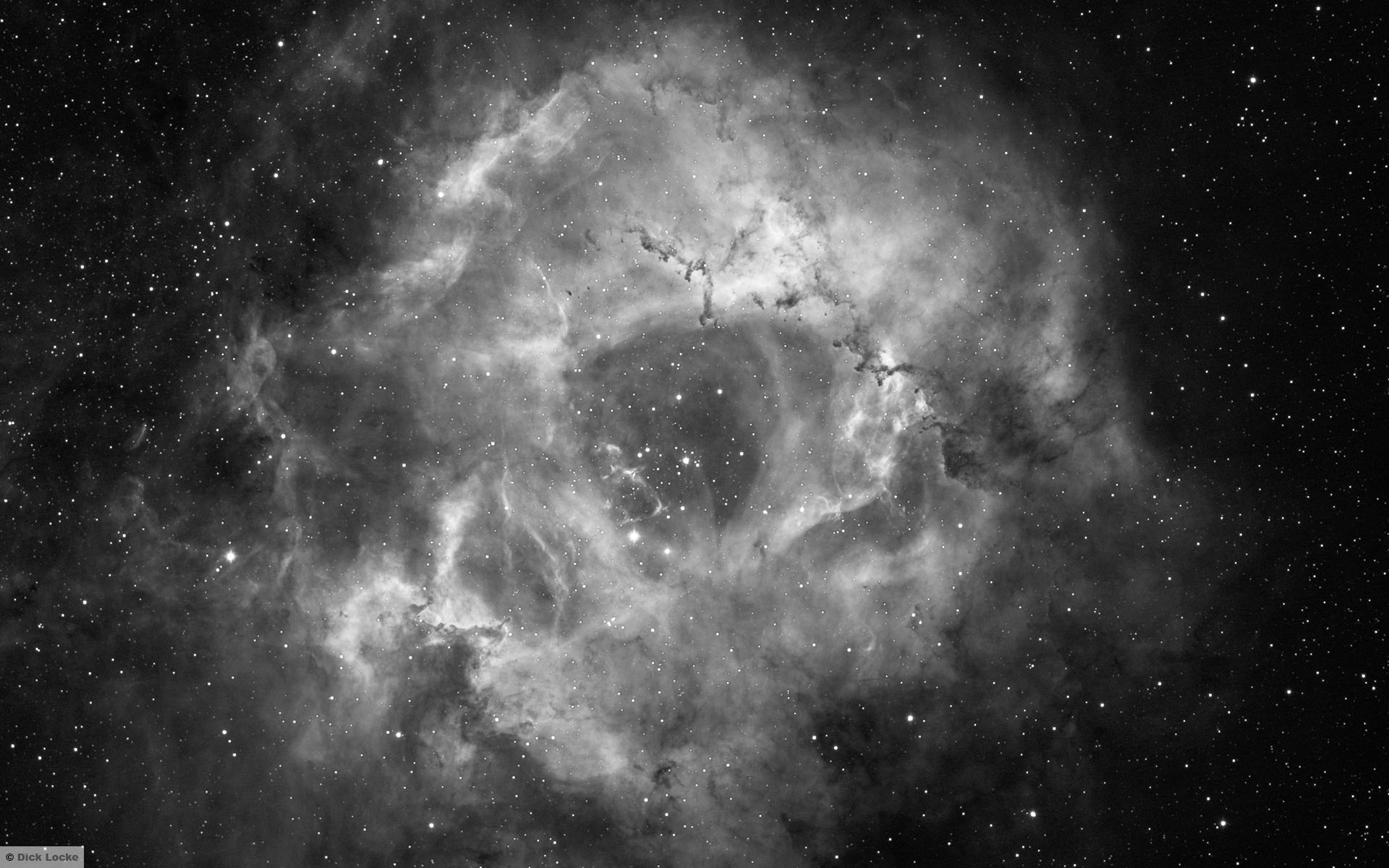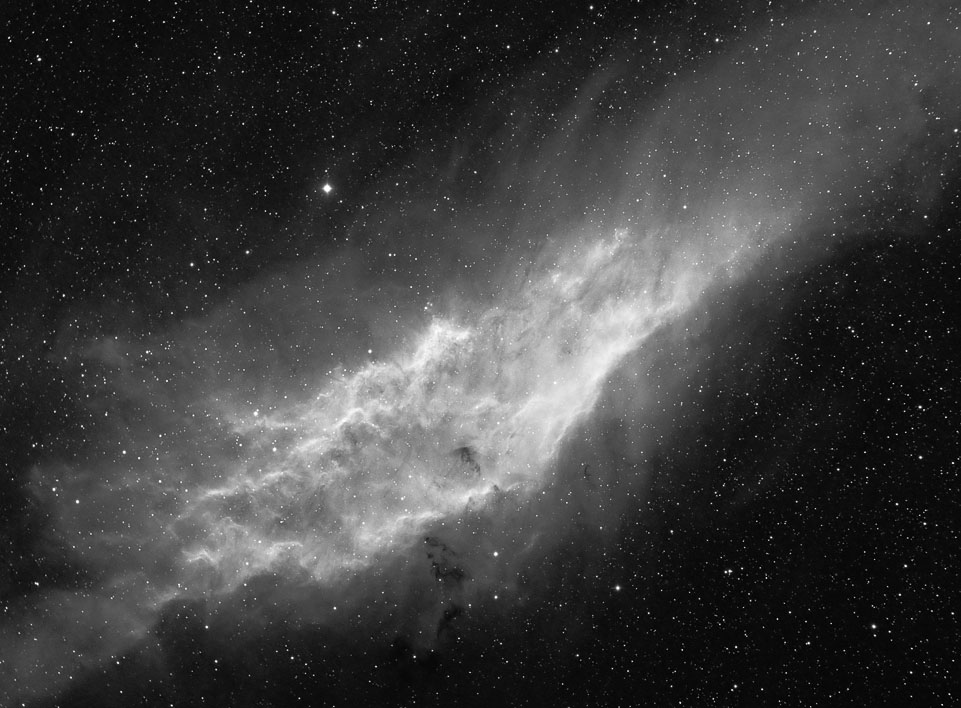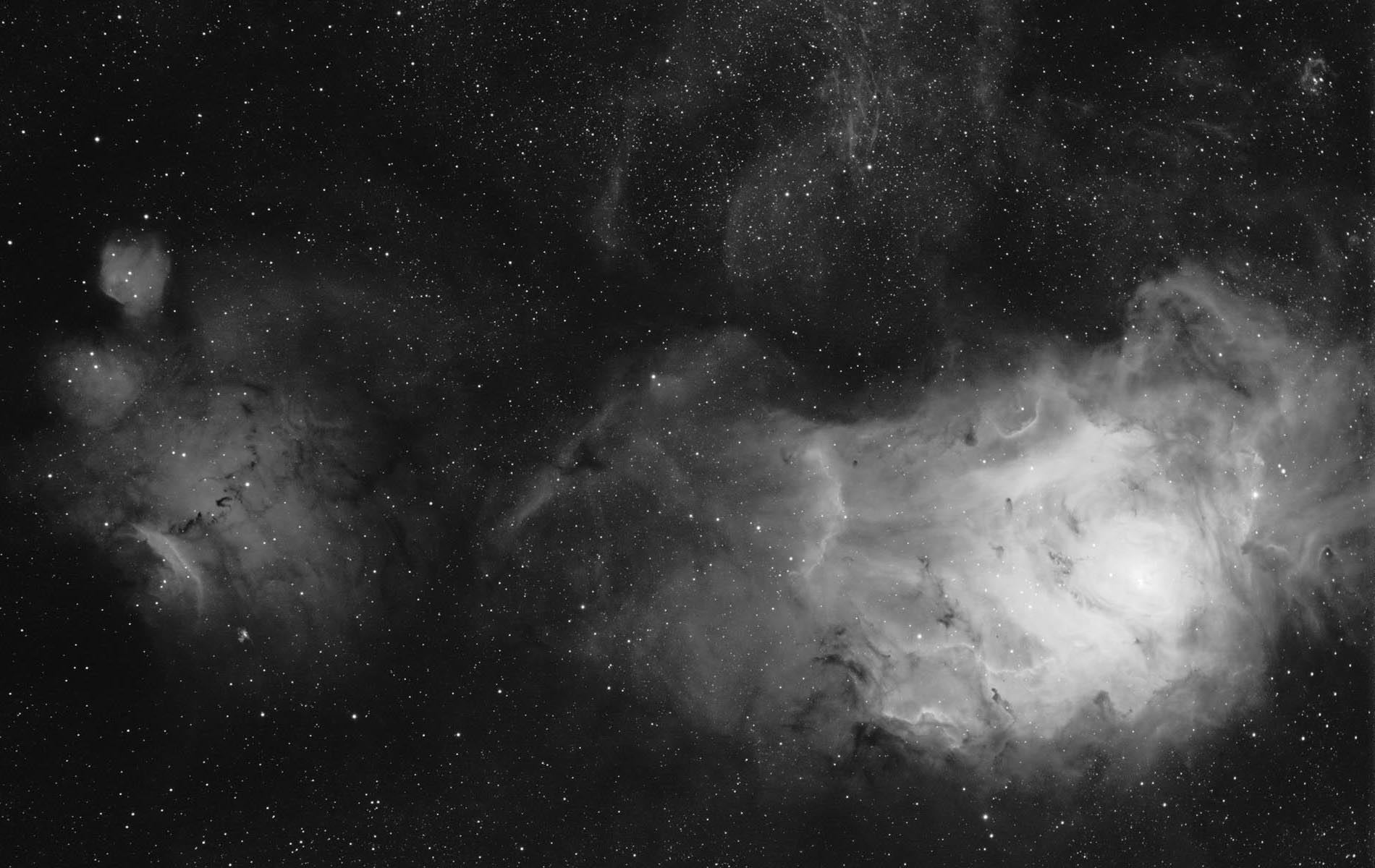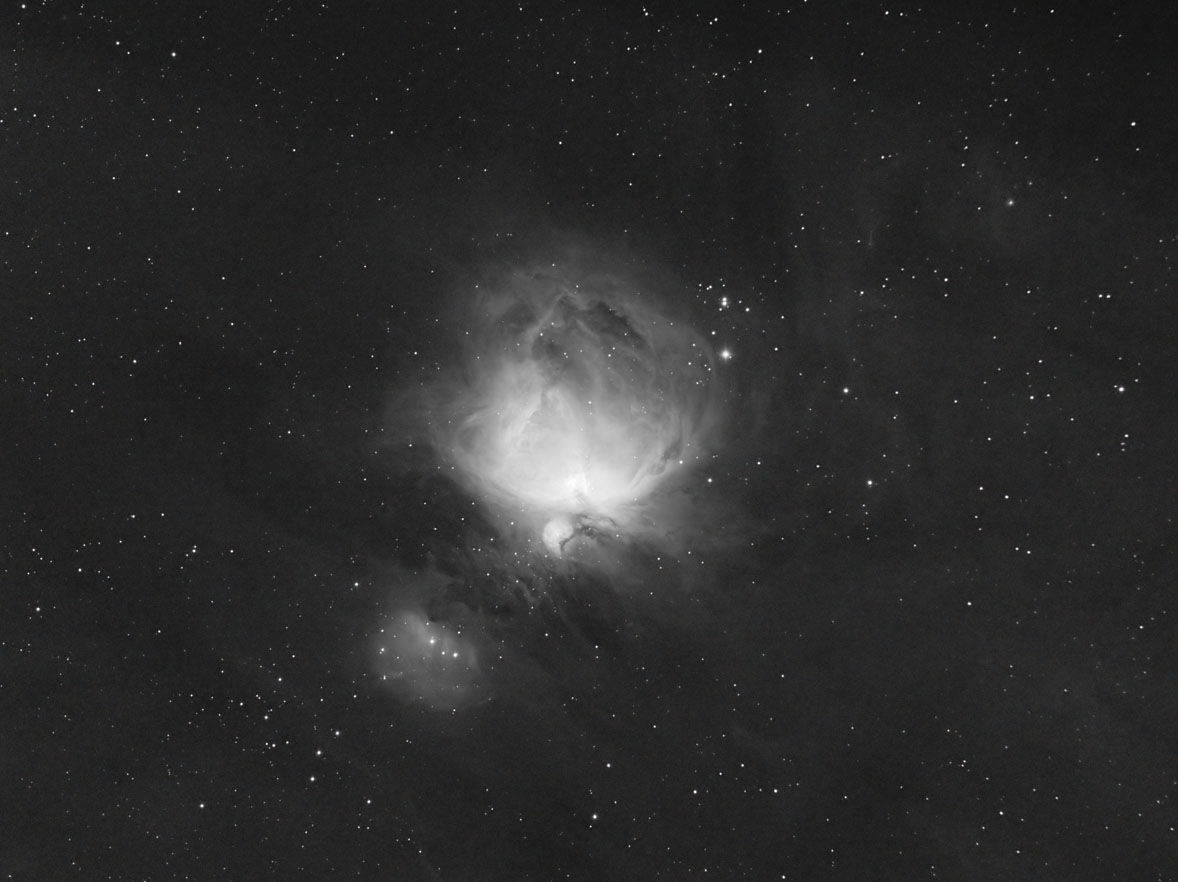
2013 Rosette H-Alpha
Welcome to my narrowband imaging page featuring some images with my SBIG ST-8300M (monochrome) camera. My older Narrowband page has images from "color" cameras fitted with an H-alpha narrowband filter. Narrowband (NB) filters enhance contrast of emission objects by accepting only a narrow range of wavelengths around the emission lines of hydrogen (H-a, 656 nm), oxygen (OIII, 501 nm), sulfur (SII, 672nm).
Below find links to a few showcase narrowband images.

I hope you enjoy the large monochrome image of the Rosette Nebula presented above. It consists of 30 *5 minute exposure with the SBIG ST-8300m monochrome camera, narrowband filters, and the Takahashi FSQ-85 telescope with reducer from the 2013 Davis Mountains trip. See mapped color narrowband images on the Rosette Nebula main page.

















The image above (click the thumbnail) consists of about 24 minutes H-alpha plus about 42 minutes of OIII from the back yard, April, 2011. FSQ-85 telescope and ST-8300 camera. I blended the O3 into Blue at 100%, into green at 50%, H-alpha into luminance and red, and then tried a few things in Photoshop! H-alpha image is shown below.

See my California Nebula page for details on the above; it's 27*5 minutes exposure.

This is a 1900x1200 sized view of the Lagoon Nebula (Messier object # 8, aka M8) area using 1.5 hours total exposure through the Takahashi FSQ-85 Telescope (no reducer), AP 900GTO mount, SBIG ST-8300 camera from Wimberley, TX. It uses a Narrowband H-alpha filter, which filtered out most of the 83% illuminated moon light that was about 60 degrees away during imaging. This links to my primary M20/M8 page, for more information about these objects. I was pleased with the performance with stars in the corner with this scope/camera combination. Main M8/M20 Area Page is here.
I'll be working on a new mosaic of this very interesting part of the sky. Note in addition to M8, which commands a lot of attention, there are also a number of other objects in the "paw" area on the right: NGC6559, IC4685, B303, IC Objects 4684, 1274, 1274; B91.


This shows a bit of the faint nebulosity in a fairly wide area around the  Orion Nebula, also see Comparative Close-Ups of the Orion Nebula, shot with a H-alpha filter on a monochrome CCD camera through a Takahashi "Baby Q" telescope. 4/1/2011. This is 12*2 minutes with the Orion nebula only about 25 degrees elevated, from the back yard, fair transparency. Astro-geek details: I used 100 EL panel flats, maybe 50 flat darks (these flats need a relatively long 4+ second exposure), and 32 dark frames; camera temp -5 degrees C, rough polar alignment and guided, captured and processed in CCDSoft, focus assisted with a "GoldFocus" mask & software. (I no longer use the "goldfocus" software.)
Orion Nebula, also see Comparative Close-Ups of the Orion Nebula, shot with a H-alpha filter on a monochrome CCD camera through a Takahashi "Baby Q" telescope. 4/1/2011. This is 12*2 minutes with the Orion nebula only about 25 degrees elevated, from the back yard, fair transparency. Astro-geek details: I used 100 EL panel flats, maybe 50 flat darks (these flats need a relatively long 4+ second exposure), and 32 dark frames; camera temp -5 degrees C, rough polar alignment and guided, captured and processed in CCDSoft, focus assisted with a "GoldFocus" mask & software. (I no longer use the "goldfocus" software.)
Filter Details:
Astrodon 5nm - 36mm filters including H-alpha, O-III, and Su-II filters.
The “Hubble Palette” of colors is commonly used to show many of the images from the Hubble telescope:
Red = Sulfur,
Blue = Oxygen
Green = Hydrogen Alpha
For Reference: An approximation of natural colors may be achieved by the following narrowband blending:
(above borrowed from Phil Hosey's image description here.)
Another formula found on a PixInsight page says:
0.5*S2 + 0.5*Ha
0.15*Ha + 0.85*O3
O3
See the section: "Natural Color" Technique from Narrowband Images (RGB optional) on this page for a detailed description of how I do natural color images from narrowband sources.
Astronomy Pictures: Dick Locke's Astrophoto Gateway page....
Copyright © by Dick Locke. All Rights Reserved.
Contact and Image Use Information